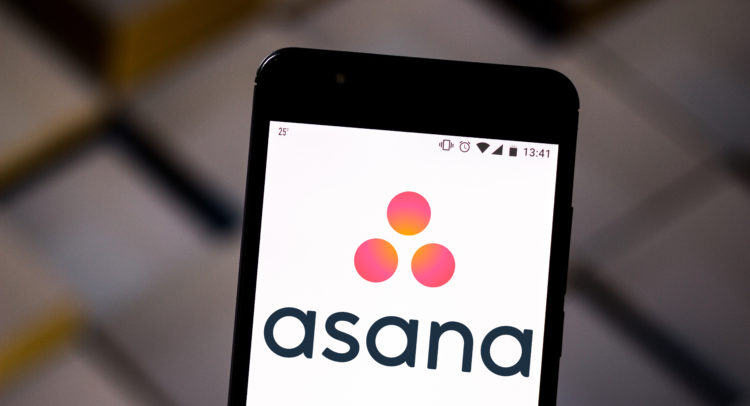Based in San Francisco, Asana (ASAN) operates a work management platform. I am bullish on the stock.
Elevate Your Investing Strategy:
- Take advantage of TipRanks Premium at 50% off! Unlock powerful investing tools, advanced data, and expert analyst insights to help you invest with confidence.
It’s a widespread problem that causes many businesses to waste time and money. Shockingly, 58% of employees’ time is being spent in “work coordination” activities instead of doing the skilled, value-enhancing work they were hired to do. Moreover, employees reportedly waste six working weeks per year on duplicated work and unnecessary meetings.
Technology is supposed to make workers more efficient, but oftentimes it only has the opposite effect. Believe it or not, 42% of workers report that they’re spending more time on email, and 40% are spending more time on video calls compared to last year. This is clearly not efficient — yet, there’s a company that deploys powerful software to help solve these issues.
That company’s name is Asana, and it recently added to its already robust suite of tech tools to keep workers aligned and engaged. At the same time, Asana’s revenue growth is impressive, yet the company’s shares appear to be trading at a steep discount.
Helping Workers Work
Suffice it to say that ASAN stock hasn’t been a strong performer in 2022 so far. Yet, there could be a prime bargain for contrarian investors here. The stock topped out at $145.79 in November of last year but recently slipped below the $20 level.
Perhaps, before the year is finished, the investing community will finally come to appreciate Asana’s unique product offerings. As businesses increasingly adopt remote and hybrid work models, they should prioritize employee efficiency, and Asana is glad to assist with this.
Asana continues to add products and features that help workers stay on task and avoid wasting time while empowering management to monitor their employees’ progress. For example, the company launched Asana Flow, which “added a workflow builder and template libraries that make it easier to build workflow automations.”
More recently, Asana introduced its Employee Impact Suite, which can help workers stay engaged within the organization while getting a clearer sense of how their contributions fit into the company’s broader goals. Management can benefit as well, as Asana designed the Employee Impact Suite “for managers to prioritize the engaging work that moves everyone forward,” according to Chief Product Officer Alex Hood.
The Employee Impact Suite’s features include My Goals, which can help managers align individual efforts with the company’s objectives, as well as Automatic Progress Roll-Ups, which enable managers and teams to identify roadblocks in real time. The Automatic Progress Roll-Ups feature could provide outstanding value to businesses – and reduce workers’ frustrations – by “reducing the need for time-consuming status meetings and trust-reducing micromanagement.”
Setting a New Record
Opportunities in the financial markets can arise when a company delivers excellent fiscal results, yet somehow investors don’t appreciate the progress. In Asana’s case, the company’s top-line results indicate growth, even while the share price has declined sharply.
The company’s first-quarter Fiscal 2023 results certainly point to a company in expansion mode. For instance, Asana co-founder and CEO Dustin Moskovitz proudly declared that his company “set a new record for the largest deployment in the company’s history at over 100,000 seats” during the quarter.
That’s not the only positive statistic from the reported quarter. The company’s revenue totaled $120.6 million, up 57% year over year, and Asana ended the quarter with more than 126,000 paying customers. In the previous quarter (Q4 FY2022), Asana’s revenue increased 64% year-over-year, so the company is undeniably successful in selling its software products.
Furthermore, Asana has demonstrated its ability to sell to high-paying clients. During Q1 FY2023, Asana’s revenue from customers spending $5,000 or more on an annualized basis increased 73% year over year. Better yet, the company’s customers that spend $50,000 or more on an annualized basis increased to 979, representing a 102% year-over-year increase.
In Moskovitz’s words, Asana is “closing bigger net new customers,” and the company’s “largest customers are expanding at a fast pace.”
Don’t get the impression that Asana’s fiscal profile is perfect, though, as there’s definitely room for improvement in the company’s bottom-line results.
For Fiscal 2023’s first quarter, Asana revealed a non-GAAP net loss of 30 cents per share, so the company should strive to achieve profitability as soon as possible. Still, at least the company can say that it beat the analysts’ estimate of a 36-cents-per-share loss for the quarter.

Wall Street’s Take
Turning to Wall Street, ASAN is a Moderate Buy based on four Buys, three Holds, and one Sell rating assigned in the past three months. The average Asana price target is $32.50, implying 79.7% upside potential.

The Takeaway
Maybe you’ve never thought about investing in a work management platform before. It’s a high-potential niche market, and Asana continues to innovate with advanced features for managers and their teams. Plus, the company’s revenue growth should quell some of the skeptics’ concerns.
If Asana can achieve profitability, that would solidify the bull case even further. Nevertheless, there’s a potential buying opportunity right now, as Asana stock looks cheap, and the company has no shortage of high-paying customers.
















